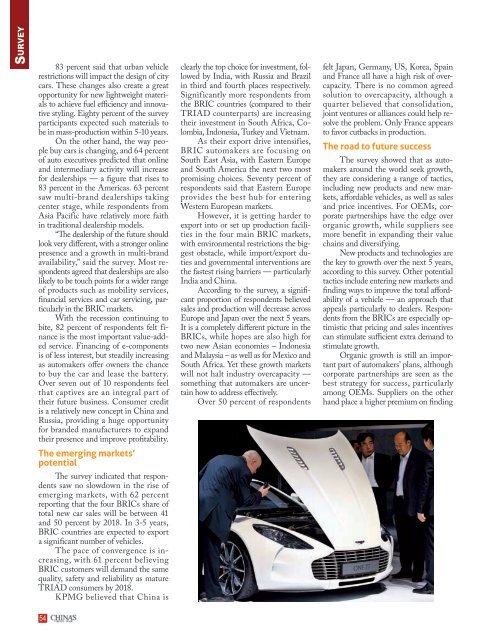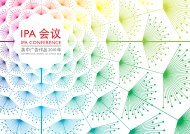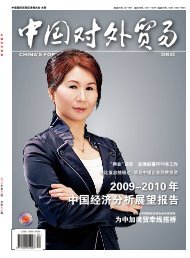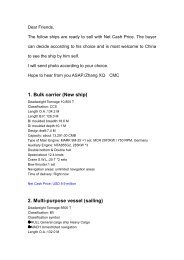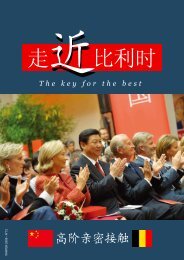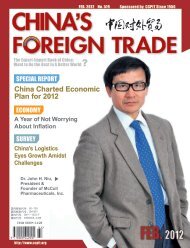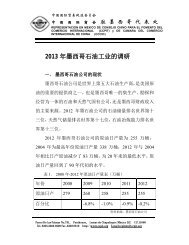Create successful ePaper yourself
Turn your PDF publications into a flip-book with our unique Google optimized e-Paper software.
83 percent said that urban vehicle<br />
restrictions will impact the design of city<br />
cars. These changes also create a great<br />
opportunity for new lightweight materials<br />
to achieve fuel efficiency and innovative<br />
styling. Eighty percent of the survey<br />
participants expected such materials to<br />
be in mass-production within 5-10 years.<br />
On the other hand, the way people<br />
buy cars is changing, and 64 percent<br />
of auto executives predicted that online<br />
and intermediary activity will increase<br />
for dealerships — a figure that rises to<br />
83 percent in the Americas. 63 percent<br />
saw multi-brand dealerships taking<br />
center stage, while respondents from<br />
Asia Pacific have relatively more faith<br />
in traditional dealership models.<br />
“The dealership of the future should<br />
look very different, with a stronger online<br />
presence and a growth in multi-brand<br />
availability,” said the survey. Most respondents<br />
agreed that dealerships are also<br />
likely to be touch points for a wider range<br />
of products such as mobility services,<br />
financial services and car servicing, particularly<br />
in the BRIC markets.<br />
With the recession continuing to<br />
bite, 82 percent of respondents felt finance<br />
is the most important value-added<br />
service. Financing of e-components<br />
is of less interest, but steadily increasing<br />
as automakers offer owners the chance<br />
to buy the car and lease the battery.<br />
Over seven out of 10 respondents feel<br />
that captives are an integral part of<br />
their future business. Consumer credit<br />
is a relatively new concept in China and<br />
Russia, providing a huge opportunity<br />
for branded manufacturers to expand<br />
their presence and improve profitability.<br />
The emerging markets’<br />
potential<br />
The survey indicated that respondents<br />
saw no slowdown in the rise of<br />
emerging markets, with 62 percent<br />
reporting that the four BRICs share of<br />
total new car sales will be between 41<br />
and 50 percent by 2018. In 3-5 years,<br />
BRIC countries are expected to export<br />
a significant number of vehicles.<br />
The pace of convergence is increasing,<br />
with 61 percent believing<br />
BRIC customers will demand the same<br />
quality, safety and reliability as mature<br />
TRIAD consumers by 2018.<br />
KPMG believed that China is<br />
clearly the top choice for investment, followed<br />
by India, with Russia and Brazil<br />
in third and fourth places respectively.<br />
Significantly more respondents from<br />
the BRIC countries (compared to their<br />
TRIAD counterparts) are increasing<br />
their investment in South Africa, Colombia,<br />
Indonesia, Turkey and Vietnam.<br />
As their export drive intensifies,<br />
BRIC automakers are focusing on<br />
South East Asia, with Eastern Europe<br />
and South America the next two most<br />
promising choices. Seventy percent of<br />
respondents said that Eastern Europe<br />
provides the best hub for entering<br />
Western European markets.<br />
However, it is getting harder to<br />
export into or set up production facilities<br />
in the four main BRIC markets,<br />
with environmental restrictions the biggest<br />
obstacle, while import/export duties<br />
and governmental interventions are<br />
the fastest rising barriers — particularly<br />
India and China.<br />
According to the survey, a significant<br />
proportion of respondents believed<br />
sales and production will decrease across<br />
Europe and Japan over the next 5 years.<br />
It is a completely different picture in the<br />
BRICs, while hopes are also high for<br />
two new Asian economies – Indonesia<br />
and Malaysia – as well as for Mexico and<br />
South Africa. Yet these growth markets<br />
will not halt industry overcapacity —<br />
something that automakers are uncertain<br />
how to address effectively.<br />
Over 50 percent of respondents<br />
felt Japan, Germany, US, Korea, Spain<br />
and France all have a high risk of overcapacity.<br />
There is no common agreed<br />
solution to overcapacity, although a<br />
quarter believed that consolidation,<br />
joint ventures or alliances could help resolve<br />
the problem. Only France appears<br />
to favor cutbacks in production.<br />
The road to future success<br />
The survey showed that as automakers<br />
around the world seek growth,<br />
they are considering a range of tactics,<br />
including new products and new markets,<br />
affordable vehicles, as well as sales<br />
and price incentives. For OEMs, corporate<br />
partnerships have the edge over<br />
organic growth, while suppliers see<br />
more benefit in expanding their value<br />
chains and diversifying.<br />
New products and technologies are<br />
the key to growth over the next 5 years,<br />
according to this survey. Other potential<br />
tactics include entering new markets and<br />
finding ways to improve the total affordability<br />
of a vehicle — an approach that<br />
appeals particularly to dealers. Respondents<br />
from the BRICs are especially optimistic<br />
that pricing and sales incentives<br />
can stimulate sufficient extra demand to<br />
stimulate growth.<br />
Organic growth is still an important<br />
part of automakers’ plans, although<br />
corporate partnerships are seen as the<br />
best strategy for success, particularly<br />
among OEMs. Suppliers on the other<br />
hand place a higher premium on finding<br />
54


